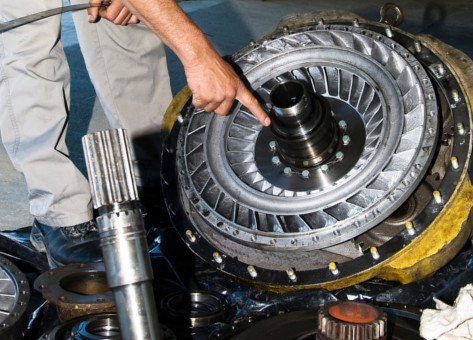Welcome to Sino Bearings web
24x7 HOTLINE:+86-28-81454188

 TECHNOLOGY
TECHNOLOGY
“My maintenance staff are highly trained and do not like using procedures.”
– Unnamed Maintenance Supervisor
If the statement above is valid, and the cost of asset failure is not important to our operation, then your staff must have an unlimited and infallible memory – congratulations!
Human error rate is high and thus without repeatable, effective maintenance procedures create errors which are called failures. Maintenance professionals actually think procedures are not required because they “know how to do it”. However this couldn’t be further from the truth. Over our careers we have seen thousands of examples of human variation creating equipment failure. We as humans are built to produce variation in almost everything we do. Most people deny this human variation exists. However, when managers are asked if they ever could not find their car keys they look at me sheepishly and say, “Yes, great point”.
Many companies honestly believe there maintenance staff members are paid to “know how to do it” without a procedure with specifications, step by step instructions, etc. What if a maintenance employee does “know how to do it” every time? One must take into consideration skill level, current state mind, and current working condition, in order to mitigate human error. In addition, what would happen if new information presents itself based on failure data? The only way to insure this new information is used effectively would be to write or change a procedure.
Well-designed maintenance procedures and a solid procedures feedback and follow-up process will mitigate human induced failures and allow for continuous improvement to occur naturally.
If a company wants to optimize asset reliability then repeatable, effective procedures cannot be optional.
If safety is number one in your organization then repeatable, effective work procedures should be as well. Figure #1 shows the correlation between injury rate and OEE.

Figure 1: Injury Rates vs. OEE
Ron Moore’s book – Making Common Sense Common Practice
We may not know why the bearing in Figure 2 failed. It is easy to surmise that the correct lubricant, quantity, and re-lubrication interval were likely not clearly specified in the maintenance instructions related to the equipment.

Figure 2. Bearing Failure Example
In the field of maintenance, the traditional approach has been to rely upon the intuitive knowledge and skill of the craftspeople who conduct it. There is a corollary that accompanies all of this that many skilled craftspeople believe and would like management to believe firmly, “There are too many variables in maintenance, making compliance with written procedures impossible and impractical; that the ’way we’ve always done it’ is the best and only way to conduct maintenance.”
The bottom line is effective, repeatable procedures are a requirement if a company wants a true continuous improvement process for optimizing asset reliability then repeatable procedures cannot be optional.
There is a big problem when moving from current state to this future of repeatable, effective procedures and that is change. Change is not easy. Here are proven steps to success in this area:
Send a few hard core individuals to training in developing repeatable, effective procedures. Upon return from the training sit down with the employees who received the training and work with them to develop a plan to move from current state to future state with effective, repeatable procedures. Be sure this plan has imbedded the following items: Training for maintenance technicians, planners, supervisors, managers, reliability and maintenance engineers (2-4 hours for most) Develop a process map for procedure development and approval along with defining roles and responsibilities. See Figure 3 and 4
Figure 3 – Example: Procedure Process Map

Figure 4 – Example: Roles and Responsibilities
There is really no valid excuse, today, for not moving towards procedure-based maintenance. The basic conclusion is worth repeating. The more detailed the procedures and the more insistence on compliance with procedures an organization becomes, the more precise and less error prone its maintenance will become. The result will be an increase in reliability to as close to the limit that design and other factors will permit.
If one makes the decision to not use effective, repeatable procedures you must prepared to accept the consequences of this action which would be higher equipment failure, higher maintenance cost, along with higher safety and environmental risk.
Developing effective, repeatable procedures is the only choice an organization has if it wants to mitigate risk and invoke continuous improvement into the reliability of its assets.
Mitigate human induced failure and optimize reliability and cost through the use of effective, repeatable preventive, predictive and corrective maintenance and operator-care procedures.
Contact
Ricky Smith
Principal Advisor – Maintenance/Reliability
GPAllied.com
KMK BEARINGS